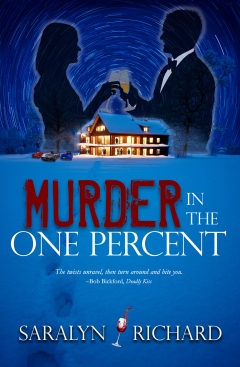 “Excuse me—are you ladies writers?” asked the man at the next table in Passion Pie Café, Truth or Consequences. Clearly accustomed to the ways of T or C, he understood that it’s socially normal to listen, to introduce yourself, and to connect with strangers.
“Excuse me—are you ladies writers?” asked the man at the next table in Passion Pie Café, Truth or Consequences. Clearly accustomed to the ways of T or C, he understood that it’s socially normal to listen, to introduce yourself, and to connect with strangers. 
I was having lunch with a friend who did the cover photography for some of my books, and he’d overheard us discussing the plot challenges of my next book. She’s a thoughtful and insightful reader, a great person to brainstorm with, so he assumed we were both writers. The gentleman had pages of notes on his table, and he explained that he was an archaeologist and professor working on his first mystery, to be set at an archaeological site on a fictitious version of a well-known ranch in the area where he has done work for many years.
“May I pick your brains?” he asked.
This was the beginning of a great conversation, getting acquainted as new friends as well as sharing creative processes. When we ran out of time to finish it, he invited us out for dinner the next day. In between those two meetings, I reflected on how much floundering I did years ago, trying to breathe life into a non-viable first draft, before I found the resources that helped me become a better writer.
These are some I recommended to him
- Sisters in Crime (SinC). There are now misters as well as sisters in the group. The SinC Guppies group (a name that evolved from the Great Unpublished) is where I found my editor and my critique partners, where I arranged manuscript swaps, and got answers to all sorts of obscure questions for my research. The subgroups of the Guppies help with marketing, social media, brainstorming, and more. Local SinC chapters host workshops and speakers and provide networking and promotional opportunities. (Our fellow blogger Patricia Smith Wood does great work with Albuquerque chapter.)
- Editor and writing teacher Ramona DeFelice Long’s current blog project, 40 Days of Worksheets.
- James Scott Bell’s Plot and Structure and Jack Bickham’s Scene and Structure. For me, these are the ultimate and irreplaceable guides to making a story work.
- Feedback from other writers. I was impressed that he’s already getting it. As he debated using first or third person, he had people look at his first chapter, and everyone told him it was better in third person. The newbie author himself was the only one who liked it in first person. Off to a good start. He’s killed his first darling.
He knew he had a difficult project underway and genuinely wanted to learn. He had insight into the weakness that’s slowing him down—editing fanatically on the first draft rather than pushing through and polishing later. (A weakness I understand all too well.)
I offered to critique the work in progress when it’s ready. We came up with a possible title and even a theme for titles in the series. He formed quite a bond with my photographer friend, and I’ll be curious to see if her work ever ends up on his book covers.
My prediction is that he’ll succeed. He loves mysteries, knows how to work hard, has a sense of humor, research skills, and an original idea. The romantic subplot of his mystery is a knock-out. And he doesn’t think he already knows everything. Meeting him reminded not only how much I’ve learned since I was in his situation—a professor writing a first draft in my free time—but also how much I have to learn and keep re-learning.
Image credit, Passion Pie Cafe exterior by Donna Catterick https://alwaysbackroads.wordpress.com/2016/11/30/wobbly/wobbly/




 Someone comes to the party with murder in their heart and poison in their pocket…
Someone comes to the party with murder in their heart and poison in their pocket… Award-winning mystery and children’s book author, Saralyn Richard, is a writer who teaches on the side. Her children’s picture book, Naughty Nana, has reached thousands of children worldwide.
Award-winning mystery and children’s book author, Saralyn Richard, is a writer who teaches on the side. Her children’s picture book, Naughty Nana, has reached thousands of children worldwide. The way my mind, and I would expect most writer’s minds work, if I see a person with something interesting about them, chances are they are going to end up in one of my books.
The way my mind, and I would expect most writer’s minds work, if I see a person with something interesting about them, chances are they are going to end up in one of my books. It’s like the scene were six people witness a crime and each one sees something different. I think all readers are the same way. Even if I did give them an exact description of a character, they would still “see” the character in their own way in their mind.
It’s like the scene were six people witness a crime and each one sees something different. I think all readers are the same way. Even if I did give them an exact description of a character, they would still “see” the character in their own way in their mind.
You must be logged in to post a comment.